Will the Real Milan 2 Please Stand Up?

By Jim Naughton
WILL THE REAL MILAN 2 PLEASE STAND UP?
A regrettable Team Yankee tendency to hand-wave the difficulty of introducing new systems in the middle of a come-as-you-are war has been reinforced by NATO FORCES, the latest offering in the World War III-Team Yankee universe. The source of this is apparently customer pressure to jump into ‘90s technology to counter the appearance of Soviet ERA. Where once tanks immune to defensive fire were the sole province of NATO players, now the Soviets had them too.
So Battlefront has introduced several upgraded missiles as retrofits to the existing lists. The problem is that some of these missiles were the output of several years of research only made possible by the compromise of Soviet KONTAKT-1 technology following the end of the Cold War. Others would require retrofit of surviving combat vehicles with new launchers, and the last would require missiles to be sent back to the United States to return a couple of months later – missiles that already were in critically short supply.
I want to clarify what actually existed in 1985, and show how unlikely these changes were. Players with a historical bent can choose to have ‘mutual and balanced forces’ based on actual 1985 technology.
Team Yankee is a fun game (emphasis: game, not simulation) that touches the high points of combat in the 1980s without getting overly complicated. It started as a clash between the Soviet army and the US Army and frankly produced a balanced game that represented 1985 fairly. Three Abrams M1 tanks could square off against six T72s and a coin-flip would decide the issue. The Improved TOW missile fired off the M901 TOW variant of the M113 came in two-packs and was vulnerable to tank cannon so were not overwhelming.
Then Iron Maiden introduced the MILAN missile, and the game took a new direction. UK infantry units got the ability to repel tank assaults thanks to Carl Gustav, and could be augmented with MILAN missile teams that could dig in. A T72 firing at a MILAN mounted on a FV432 was roughly equal with an encounter with an M901. But dug-in MILANs essentially were invulnerable. Why? First, the Mistaken Target Rule allows a two-thirds chance of shifting a hit to another team.
Then that pesky infantry save allows a two-thirds chance of surviving a hit. The Brutal rule reduces that save to a net of 45%, still substantial. And I must roll firepower if the unit is dug in. Even a 10-tank unit is unlikely to kill a MILAN team – it will average four hits on dug-in infantry. Plenty of room to false target to other infantry teams in the big Irish Guards units until the other teams are dead. The odds of killing a MILAN team with a brutal tank cannon are 4% per shot. Using the heavy machine gun while stationary at close range is 3.5% (about 1.2% per ROF).
With an essentially invulnerable AT=21 platform on the table, it’s a small wonder the Red Horde ran to BMP swarms. Personally, I went with T55AM2.
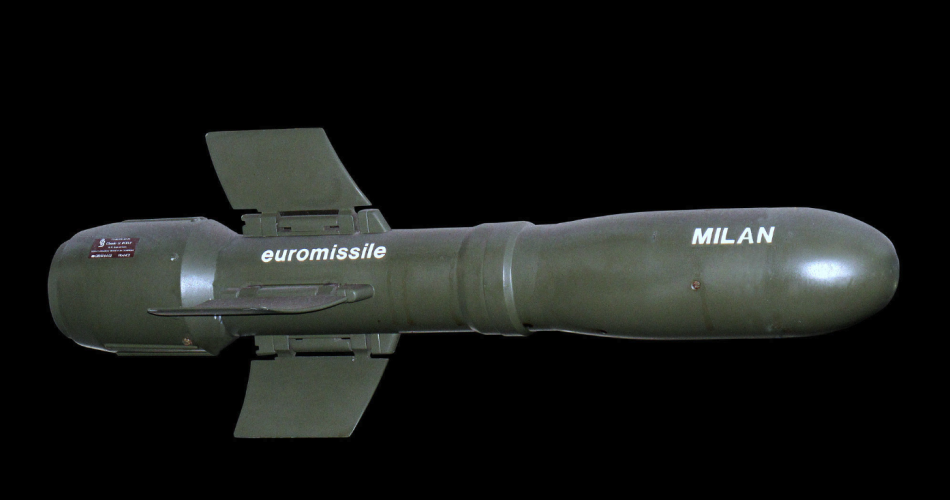
Here’s the thing about MILAN. The MILAN was tested and resoundingly rejected by the US Army in the late ‘70s. According to Picatinny and Redstone, it was too heavy to replace DRAGON (which was going out of production) with no compensating advantage in armor penetration and too anemic after penetration to replace ground-mount TOWs. The only advantage over DRAGON was more wire.
DRAGON is AT=18 in the game and basic TOW is AT=18 in FOAN. Smelling something fishy I went looking. Sure enough, I found that MILAN had copied the ‘probe’ from the ITOW and started production late in 1984. By August 1985, approximately 1 missile existed for each launcher. Of course, most of the deliveries by the TY campaign start date of August 4, 1985, were to French Army units, so BF ‘anticipated’ the deployment of the new MILAN 2 missile to BAOR and Bundeswehr by a couple of years. This fuzzy thinking has been coloring the game since; just because a thing existed as a prototype or was in low-rate initial production does not equate to a capability.
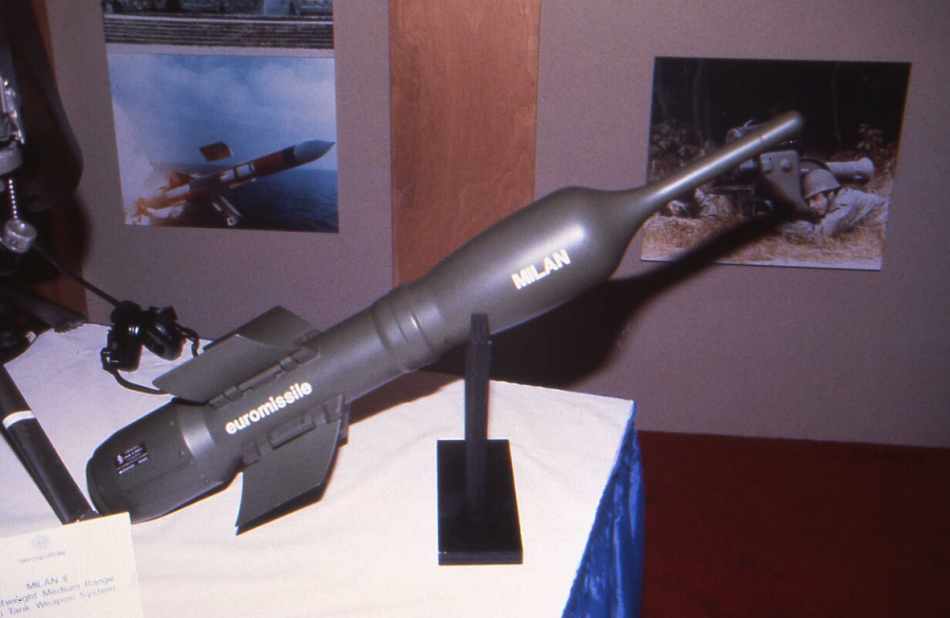
Giving BF the benefit of the doubt, my belief is that they called the new NATO missile ‘just MILAN’ to avoid confusing their customers.
Now along comes ‘MILAN-2’ in NATO Forces. Really? The new missile outperforms TOW-2. Say again? Yet BF’s write-up confidently declares (pg 150) that the new missile has a whopping 550mm of penetration. The unclassified parameter for TOW-2 penetration is approximately 900mm.
The declassified ITOW penetration is 650mm. MILAN 2 has no technology tricks beyond a probe, just like ITOW. The probe takes advantage of the fact, discovered by improved high-speed framing cameras in the late ’60s and early ‘70s, that both the shaped charge jet and the shaped charge slug contributed to penetration. Increasing standoff increased overall penetration by about 50 percent.
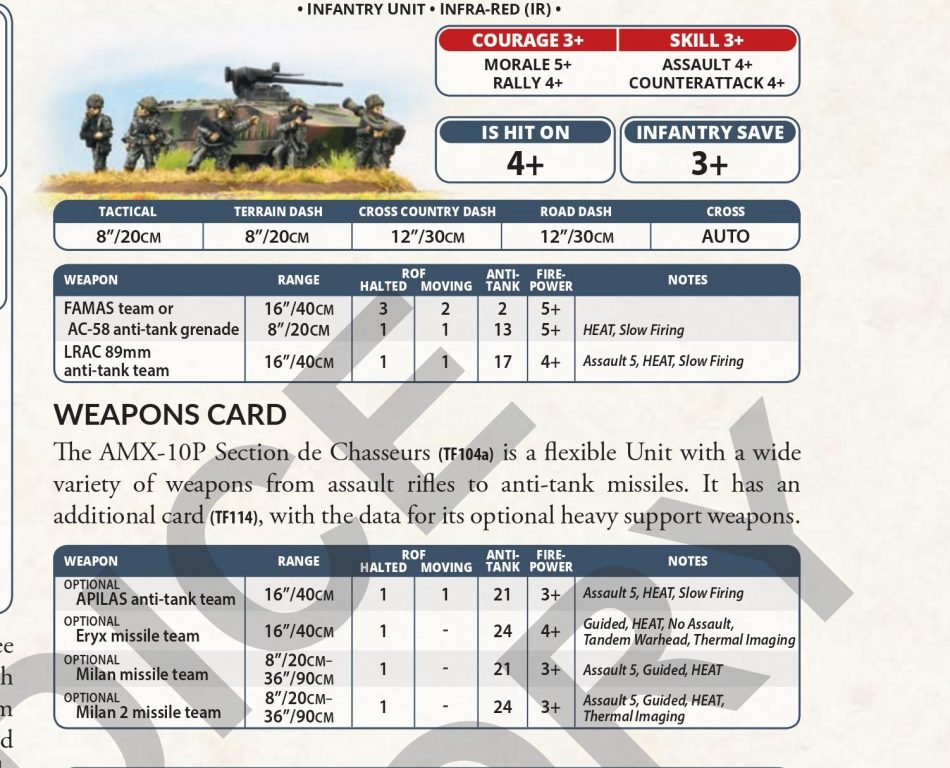
What BF has done (again) is anticipate the deployment of MILAN 2T or even MILAN 3. MILAN 2T (1993) and MILAN 3 (1996) use tandem shape charges to (only) defeat reactive armor. Tandem shape charges evoke an image of the Army’s LACROSSE missile, with two enormous shape charges designed to penetrate submarine pressure hulls and battleship armor in the ‘50s…the last hurrah of the coastal artillery. But on missiles like the MILAN and TOW, the reality is a small precursor shape charge that adds little to penetration of actual armor. The precursor charge ideally burns out the explosive in the ERA without starting a detonation, allowing the main charge to rip through the ERA with being countered by the explosion.
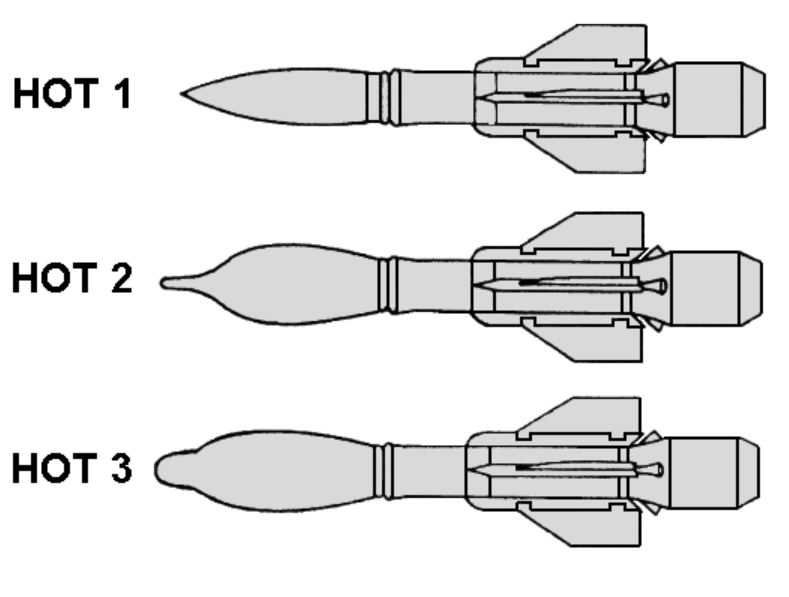
BF did the same with HOT missiles, BF labeling the 1985 edition just ‘HOT’ and now using a time machine to summon the HOT-3 from 1998 and labeling it HOT-2. The basic HOT missile (now HOT-1) always had a large shape charge so even the basic version would rate AT=22 or 23.
BF has unfortunately painted itself into a corner with the way it treats ERA. An ERA is SA=16 and the larger of FA=16 or whatever the tank would normally rate, except for KONTAKT-5 second generation ERA which apparently gives the T80U a whopping +1 to its FA rating (my calculations and R&D experience tell me that the T80B was approximately FA=19 in the BF system. Only BF knows for sure).
A better way would have been to call ERA =+8 to all armor vs. HEAT and say tandem warheads neutralized it. That way we would not have the ridiculous spectacle of a MILAN 2T with no greater penetration vs basic armor than the real MILAN 2 burning through the front armor of an Abrams M1A1 HC (600mm armor equivalent vs APFSDS plus a bonus for ‘heavy armor’ – 1300mm vs HEAT. A long way from 550mm).
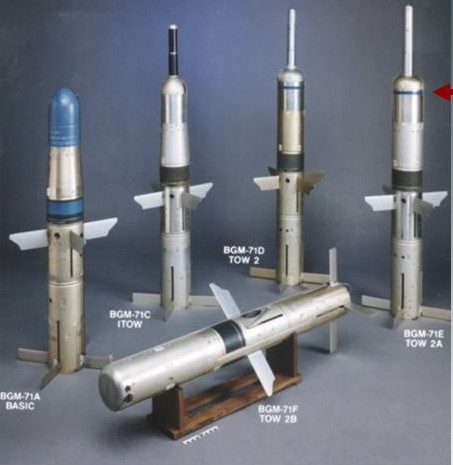
Unlike MILAN 2T, the TOW-2 took a different approach. The warhead is bigger with more explosives and a longer probe than ITOW. The main reasons that the Army adopted TOW-2 were the evaluation of the calculated effect of the ‘Super Dolly Parton” composite armor package appearing on T72B (which the CIA called M1983) and the observation of the development of the Shtora countermeasure system. NOT ERA. The resulting dual-lamp tracking system with coded signaling could not be fired from existing launchers. There were differences in hardware, software, and firmware.
An entirely new launcher, the M220, was required, replacing the M151 launcher. The first 3,300 M2/M3 Bradleys built could not fire the TOW-2 until they were retrofitted. The latest FY85 Bradley production (delivered starting late in 1986) was the first M2A1/M3A1 with the capability. The M901 TOW vehicle went through the same upgrade problem. So while TOW-2 missiles were available in 1984, the only units that could fire them were the 82nd Airborne and 101st Airmobile Division’s ground-mount TOW launchers, and then only in selected units (that had received the new launchers during Operational Test and Evaluation). A retrofit program for M901 TOW vehicles and M2/M3 Bradley absorbed all the launcher production for at least 18 months.
In the 1980s US missile production was 12,000 TOWs per year. A Corps with three heavy divisions had a BASIC LOAD requirement of 9,000. The XVIII Airborne Corps and I Corps had similar requirements, and the PACOM divisions somewhat less. Then there are reserves and National Guard, not to mention the USMC. The USAEUR requirement for TOW-2 was just being filled as the TOW-2A came out in 1988-89. The TOW-2A introduced the precursor shape charge. Put a different way, there were not any TOW-2 to be casually issued to allies. Ever. More telling, the dual-lamp capability was restricted from foreign release, like DU ammo, for many years (Congress passed a law restricting TOW technology).
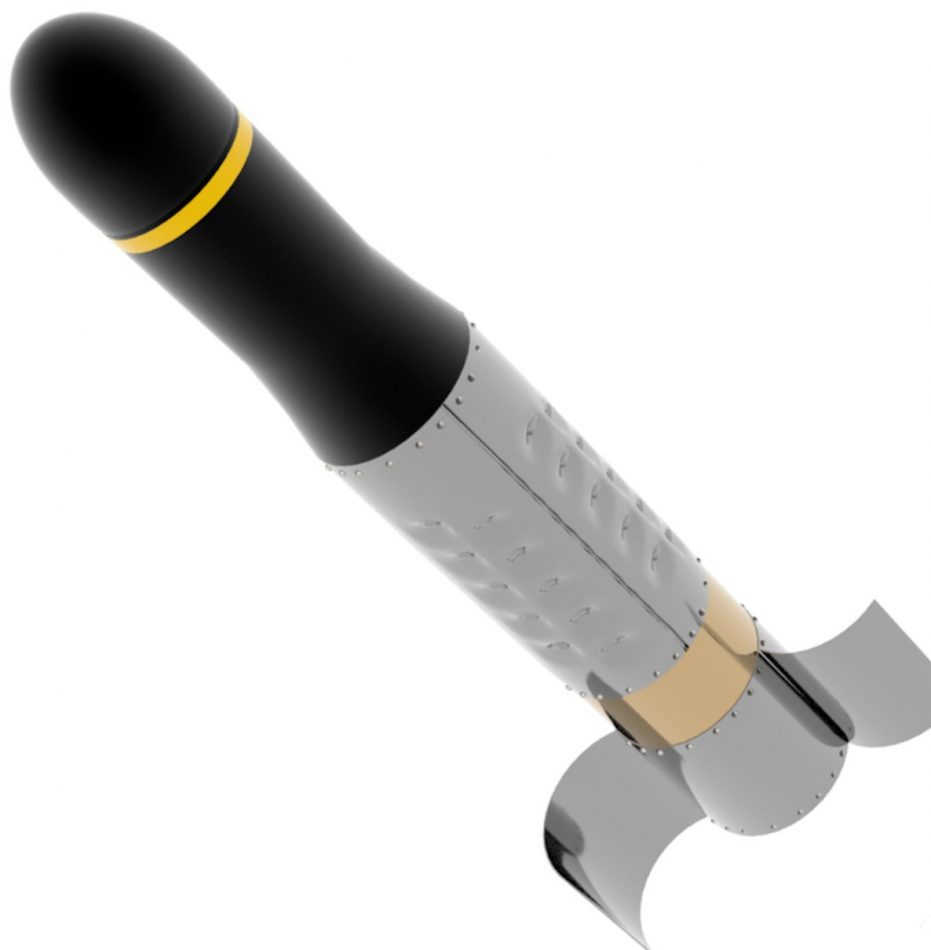
Bringing me to DRAGON-2. The DRAGON-2 were not new production missiles. DRAGON production STOPPED in 1978 at McDonnell Douglas and 1980 at Raytheon. The DRAGON-2 program took existing missiles, dismantled the warhead, and rebuilt it with a probe. The only way you could get DRAGON-2 was to send the missile back to the USA and have its warhead replaced. Not to put too much reality into the game, you can’t do this once you shoot it.
The US Army declined to improve the DRAGON in 1981, and the USMC reluctantly went on to improve DRAGON on its own nickel as an interim solution when the Advanced Antiarmor Weapons System Medium (AAWS-M eventually Javelin) crashed and burned in 1985. After two years of intense engineering effort, the first conversion was in 1987.
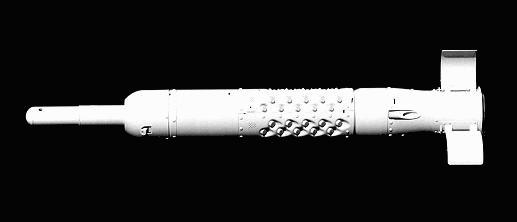
There was no pile of DRAGONs to put into this program. Every DRAGON Crew Launch Unit (CLU) was ideally given six missiles as its basic load. The total Army requirement for these missiles was 250,000 – never produced. Actual DRAGON production was just shy of 85,000 missiles with at least 12,000 sold as FMS (the Dutch got 350 CLUs and 2,300 missiles in their initial buy; 70 CLUs and a small number of additional missiles later). After deducting FMS and 17,000 purchased by USMC, the Army originally had 55,000 and this number steadily decreased by reliability testing/demonstration firing.

In 1985 there were 42,000 missiles allocated to basic load and 8,000 left in sustainment – roughly 7 missiles per each of 7,000 Army CLU. The old Gun Lobby bumper sticker about ‘cold, head hands’ comes to mind in categorizing the likelihood of getting DRAGONs back from deployed units to replace warheads after the shooting started. And 15 days into the war, USAEUR was out of DRAGONs. (This was why many units in USAEUR tried to hang onto 90mm recoilless rifles, and other Army units authorized DRAGONs never had them).
To summarize, BF has reached into the mid 90’s to provide the MILAN and HOT an upgrade that couldn’t have existed for at least a year, more probably two, after the first CAPTURED Soviet ERA tank made its way to the laboratories, authorized TOW-2 for units that didn’t have the upgraded launchers, and indulged in the sheerest of fantasy by allowing virtual DRAGON missiles to transit the ocean two ways and provided that upgraded capability to launchers that would be out of ammo before the R&D on the upgrade was complete.
Armed with this knowledge, gamers with a historical bent or desiring a historically limited technology base can confidently exclude these upgrades (and for that matter, the TOW-2 upgrade in the World War III Team Yankee American book. And PACT/Arab players using T72M as well as T55s can take comfort in NATO players wasting points.

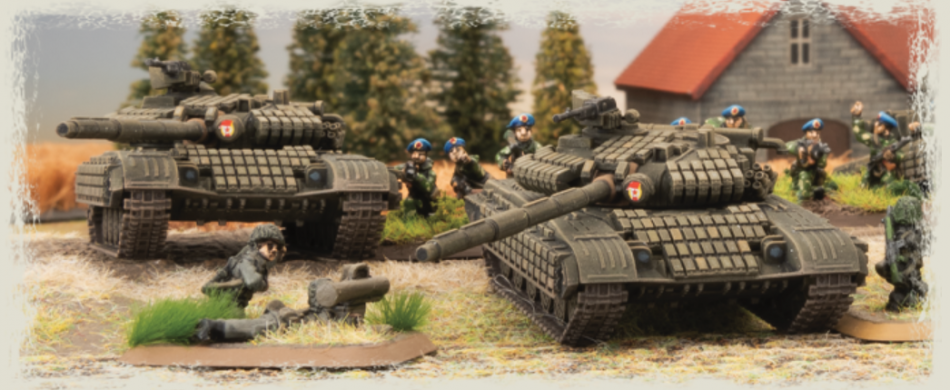
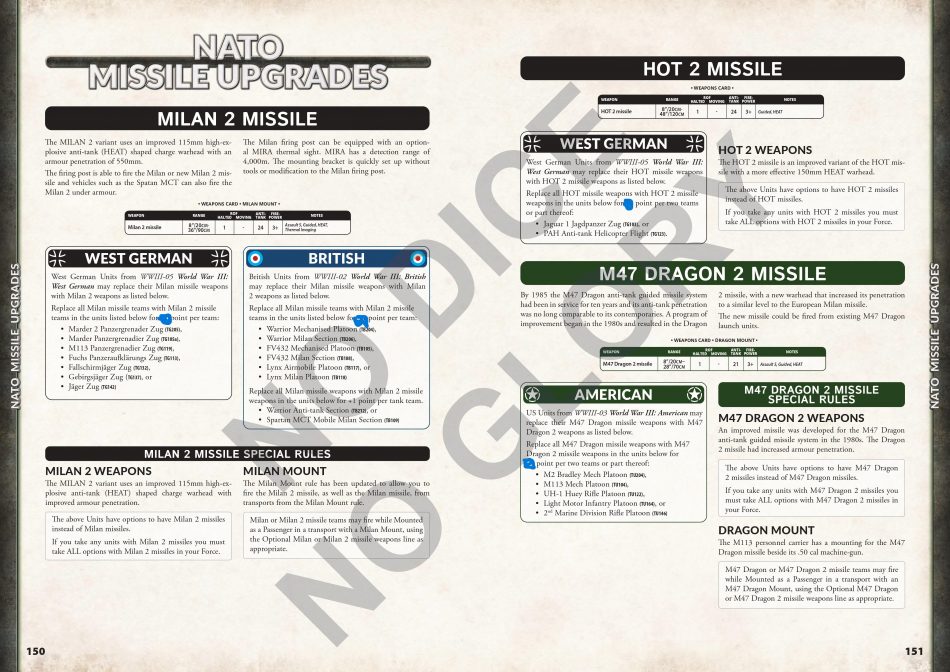
This is epic
I feel like there are now two distinct ways, how TY can be played:
1. follow the action-movie plot that BF publishes and take whatever is in the books
2. pick a time between 1970-2000 and a scenario and choose the systems accordingly.
With the new inclusions you can e.g play Dutch vs Russians in 90s Yugoslav war.
I would just enjoy if BF could print little dates that gives you an indication of when a system was widely introduced on the statcards, so you can know without having to check articles like these every time…
Could also be nice for tournaments to say something like “105pts, technology is 1986”
As always Jim great historical insight, data points and all with just the right amount of detail that informs without overwhelming. Inspite of how they get there I’m very excited to see the new kit, forces and nations that have arrived in the TY verse. Thanks again for another great article.
Thanks. Problem: NATO now has 1995 tech. When will the Soviets see Sh’tora, Drozd, T90 (ex T72B3, with KONTAKT-5)…all systems developed by the mid-80s and deferred when Gorbachev called for sufficiency instead of superiority? Or T55AMV and T62MV? (1986) Or the T55AM with Drozd actually fielded in the Naval Infantry 1984-6? If we’re going to fight Cold War Gone Hot in 1995, it would make sense to have ‘Soviet’ tech of the comparable period, right?
100% sure you don’t reroll fire power for dung in infantry. You must be thinking about Bunkers
100% sure I wrote ‘you must roll firepower’ not reroll. Copied from text: “And I must roll firepower if the unit is dug in”
Yes I see that now missread the roll part
Very interesting article but you seem to be saying that MILAN (1) was only just introduced into service in 1984/5? Not so – MILAN was well established, even to NATO roled TAVR infantry regiments by then. Munition stocks were a real concern, its true, but we were assured there was at least a week’s worth of war fighting stocks held in W.Germany! I know, I was there. I still remember, when asking at the School of Infantry why the effective range was 1950 metres, as opposed to say, 2000 or 1900, that that was the design parameter as at the time it was the typical distance between West German villages.
Sorry I wasn’t clearer. MILAN was introduced in 1972. The basic missile with a 103mm shape charge was evaluated by USA’s Picatinny Arsenal (explosives and projectiles) and Redstone Arsenal (missiles) as no better penetration than DRAGON and worse after-armor effect. In-game translation, AP=18. By 1985 something like 100,000 missiles had been sold to all customers. Euromissile offered MILAN 2 (renaming basic missile to MILAN I) in 1984 and it was accepted for use (NOT PURCHASED) shortly after. French (probably) had it in late 1985. The new warhead was 115mm diameter and is rated as approx 550mm penetration. After developing the new warhead, the Ministry of Defense of various customers had to get procurement money on on contract. Thus the WG were getting deliveries in 1986 (late) and the UK in 1987. (Cordesman, NATO’s Central Region Forces, 1987). MILAN 2T (1993) added the precursor on the probe, and made no other changes. So MILAN (2T) would (should) have the same penetration in-game as BF’s MILAN but would cancel ERA. BF originally chose to represent the MILAN 2 in-game as ‘MILAN’ because IMHO a long-range DRAGON wouldn’t make BAOR and WG infantry tough enough. So even though it was ‘1985’ MILAN got the bump to AT=21 even though UK didn’t have it for two more years. MILAN 2 was produced alongside MILAN I for a couple years to clean up existing contracts. MILAN generically produced 10,000 missiles a year so 1985-86 would see an average of 5,000 MILAN II per year taking two years for EVERY launcher produced to date to get ONE sexy MILAN-2 missile. I could recommend you peruse NEVER READY, Helion Press, to see what MOD documents say about missile capability in the ’80s. Kenton White quotes a Minister of State for Defense memo saying MILAN stocks for all UK (not what was stored in Germany) would reach FIVE Days in 1987/88. (Coincidentally, when MILAN II deliveries for UK began). So what I’m saying is BF confused the nomenclature and then gave NATO a capability that didn’t exist in real world 1985. And now has created a missile capability that didn’t exist in the real world by calling MILAN 2 AP=24.
Thanks so much for clarifying mate!
Problem is that they painted themselves into a game balance corner with their un killable Challenger ROMOR, Abrams HC and Leo2A5 (and now LeClerc).
A “kill” in TY is inoperable/combat ineffective, and “front” is 180deg frontal arc (ie including almost side on). I can’t believe that an ATGM hitting the gunbarrel / tracks / lower glacis / side-between-roadwheels of an abrams (even a current one) wouldn’t put it combat ineffective. Crew might be fine with a broken main gun or wrecked tracks but it’s not fighting on. 1/6 chance of knock out might be a bit high but that’s D6 systems for you as a 0% chance is silly.
Another option would be to make “frontal arc” be 90deg wide.
New MILAN 2 at at24 is unrealistic but so is FA 22, and now the super tanks can’t just ignore missiles, they can still completely ignore tank cannons which is also silly.
At least NATO factions have more than 1 way to kill FA22 tanks now, WP can still only kill them with airpower.
IMHO a better approach to ERA would have been an extra save maybe 3+ against HEAT and 6 against Tandem HEAT.
( that would be a good way to to do drozd too)
Then ROMOR Challenger could have just added ERA rule… or they could have left the game in the 1980s with no super tanks and no -2 missiles
TLDR they broke the balance with FA22 (and 21) they should have stuck to 19 or 20 for the 90s NATO stuff then they could have been cheaper (so you would see them in lists more) and wouldn’t need everything else rebalanced/upgraded
the same could be said about hitting a basic Abrams with AT=17 100mm from a T55 or AT=18 from a DRAGON. It could certainly obtain F-kills or M-kills. BF judges the first to be unlikely in a game based on d6 (I agree) and the second to be meaningless with a sliding time and ground scale (not sure I agree, but there it is. In a turn long enough for me to dig my half of a two-man foxhole. a tank crew can fix a track problem). The root of the problem is BF simplifying the treatment of composite armors and now ERA. Neither has much effect on straight penetrators (and even less on APFS-DS) but disproportionate effect on HEAT (Zaloga alleges M1A1 HA is 650mm vs APFS-DS and 1100 mm vs HEAT!). And TANDEM with the miniature shape charge is worthless against composites. Unfortunately fixing this issue is a ship that has already sailed.
Excellent article, would love to see BF take your input on this.
What is the point of the “can’t kill dug in infantry by shooting”-discussion?”
making arty a must have to dig out stuff is paramount in v4/TYv2.
I would say “working as intended”
question would rather be why it took 7 years for mortars to appear as gun teams?
First of all, in competitive play games are over in 2.5 hours (mostly). Lucky to get 4 turns each in. Then if both players pick the same stance, you end up in meeting engagements. No range in markers at setup. Soviets struggle to get their artillery to work, and if deprived of range in markers, it may be 2 or 3 attempts at firing before getting ranged it. And in meeting engagements, typically Soviet observers get fried in the first turn. So you can’t count on just one battery to clear out a big unit with Milans, like Irish Guards or Dutch. I wrote a series of articles about PACT artillery last year on NDNG called ‘TOS-UP.’ I’m going to draw from that series – a 2S1 Carnation has a .18 chance of killing any infantry stand under its template AFTER it’s range-in the previous turn (thus counting, in effect, brutal). Say five Irish Guards stands are under the template. The first turn (and succeeding turns until it kills one) the Carnations can expect .9 stands to die. Then .72 etc. You can’t kill all 5 stands with artillery in a four turn game. And an Irish Guards unit has potentially 11 or even 12 stands. TOS-1 is .28 kills per stand so it averages one in four the first turn, and with the big template can get all 12 in, but it’s still at least five turns to kill them all. So playing at home with a friend, artillery is great, but in a tournament it must be used in mass and even then it’s a slow skill and not reliable. As to why mortars now? I was surprised they finally listened to the chorus that’s been crying for PACT mortars since the game started. I think the answer is they saw the game stagnating. Naturally NATO got them first in a big way (the VDV mortars hardly count, because that is a niche unit).
Great article. It really brings some historical perspective.
I’m keeping my East German force as a true-to-history 1983 force with T-55, BMP-1 and T-72M. But I also play opponents that are more historically minded.
Basic T55 or T55AM? Problem with purely historical is BF doesn’t have all the options in place. EG bought 200 or so BMP-1P from Czech in 1982. Then started modifying their own, reaching a total of at least 870 by WALLFALL. Why does that matter? BMP-1P came standard with pintle-mounted SPIGOT missiles, and was upgraded to SPANDREL as soon as they came available. See my previous article “A BMP FOR ALL SEASONS”. So EG BMP in their active divisions should be, from 1982, able to mount SPANDREL missiles. EG also had T55M (basic) with lasers (as well as T54M). But only a few hundred. The armor packages and updated FCS came later. So there are vacant slots in the ‘OB’ of vehicles because BF simplified the presentation. Ironically the Finns got BMP-1P before any PACT army.